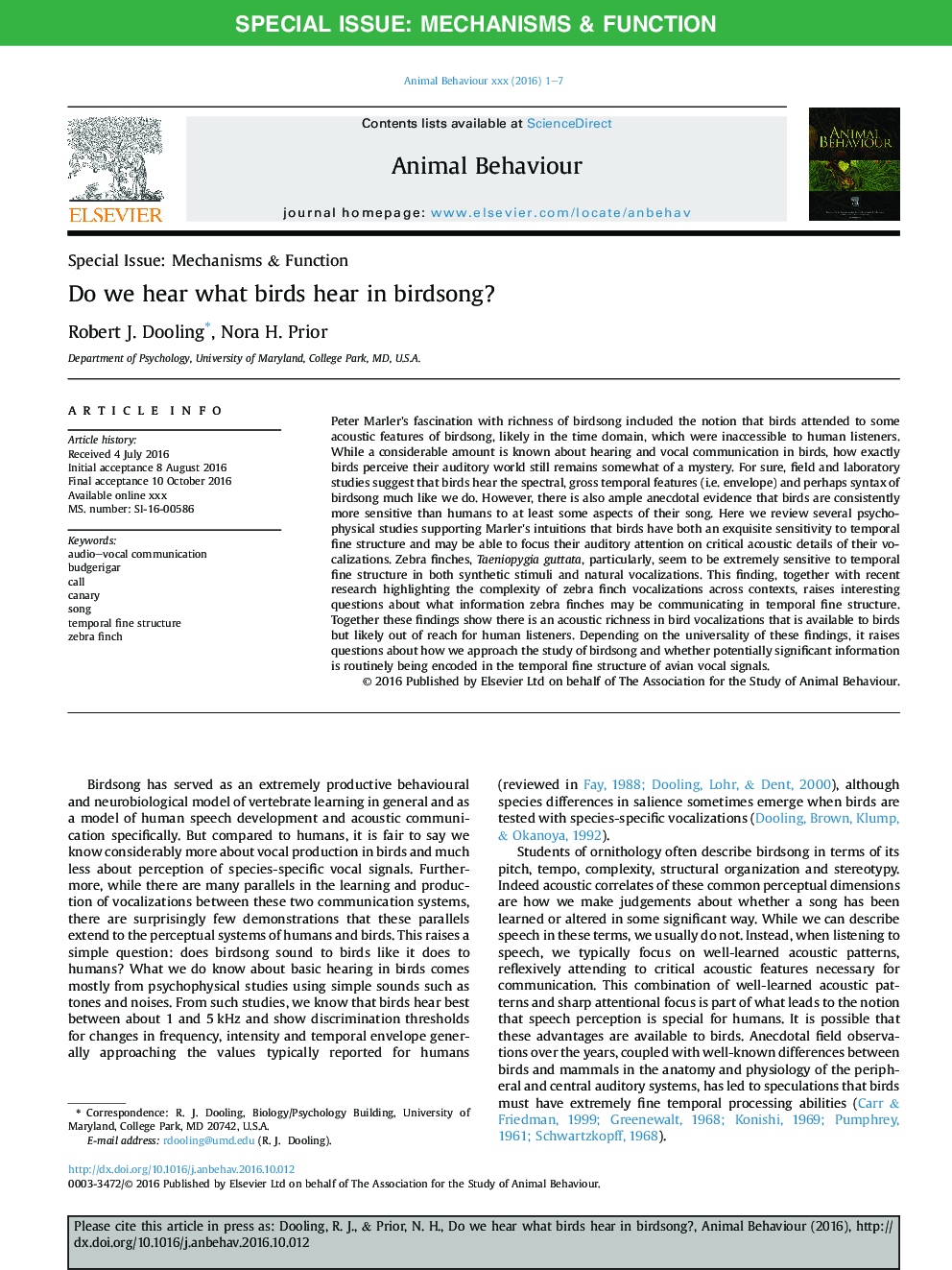| Article ID | Journal | Published Year | Pages | File Type |
|---|---|---|---|---|
| 5538651 | Animal Behaviour | 2017 | 7 Pages |
Abstract
Peter Marler's fascination with richness of birdsong included the notion that birds attended to some acoustic features of birdsong, likely in the time domain, which were inaccessible to human listeners. While a considerable amount is known about hearing and vocal communication in birds, how exactly birds perceive their auditory world still remains somewhat of a mystery. For sure, field and laboratory studies suggest that birds hear the spectral, gross temporal features (i.e. envelope) and perhaps syntax of birdsong much like we do. However, there is also ample anecdotal evidence that birds are consistently more sensitive than humans to at least some aspects of their song. Here we review several psychophysical studies supporting Marler's intuitions that birds have both an exquisite sensitivity to temporal fine structure and may be able to focus their auditory attention on critical acoustic details of their vocalizations. Zebra finches, Taeniopygia guttata, particularly, seem to be extremely sensitive to temporal fine structure in both synthetic stimuli and natural vocalizations. This finding, together with recent research highlighting the complexity of zebra finch vocalizations across contexts, raises interesting questions about what information zebra finches may be communicating in temporal fine structure. Together these findings show there is an acoustic richness in bird vocalizations that is available to birds but likely out of reach for human listeners. Depending on the universality of these findings, it raises questions about how we approach the study of birdsong and whether potentially significant information is routinely being encoded in the temporal fine structure of avian vocal signals.
Related Topics
Life Sciences
Agricultural and Biological Sciences
Animal Science and Zoology
Authors
Robert J. Dooling, Nora H. Prior,
